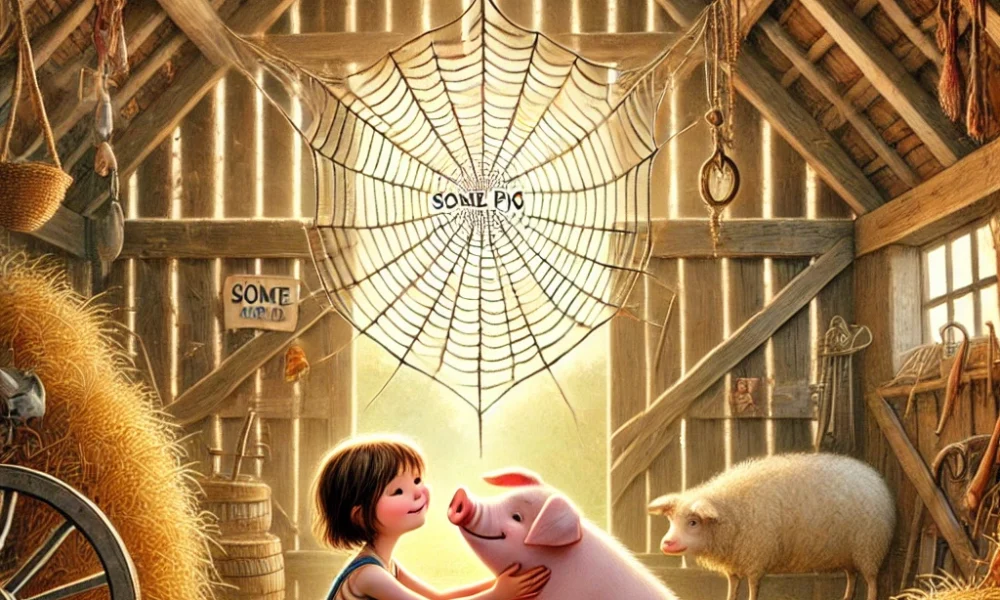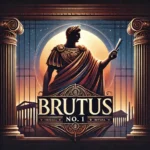Table of Contents
When it comes to classic children’s literature, few stories have touched hearts as deeply as Charlotte’s Web by E.B. White.
This beloved book isn’t just a story about a pig and a spider—it’s a beautiful exploration of friendship, sacrifice, and the circle of life.
Whether you’re revisiting it or discovering it for the first time, Charlotte’s Web Summary has lessons that resonate with readers of all ages.
The Story at a Glance
The story begins with a young girl named Fern, who saves a runt piglet named Wilbur from being slaughtered.
Fern raises Wilbur with love and care, but as he grows, he moves to her uncle’s farm. There, Wilbur feels lonely until he meets Charlotte, a wise and gentle spider.
Their friendship becomes the heart of the story.
When Wilbur learns he’s destined for the butcher, Charlotte steps in to save him.
Using her web, she weaves words like “Some Pig,” “Terrific,” and “Radiant” to convince the farmers that Wilbur is no ordinary pig.
Her clever plan works, and Wilbur’s life is spared.
But as time passes, Charlotte faces her own mortality, leaving Wilbur with a legacy of love and wisdom.
Themes That Touch the Heart
The Power of Friendship:
Charlotte and Wilbur’s bond is the soul of the story.
Despite their differences, they show us that true friendship knows no boundaries. Charlotte’s selfless acts remind us that real friends go out of their way to help each other.
Sacrifice and Love:
Charlotte’s dedication to saving Wilbur, even at the cost of her own energy and life, is a powerful lesson in love and sacrifice.
Her actions teach us that sometimes, the greatest gift we can give is putting others before ourselves.
The Cycle of Life:
The story doesn’t shy away from the realities of life and death.
Through Charlotte’s passing, Wilbur learns to accept loss and cherish the memories of those we love.
It’s a gentle yet profound way to introduce young readers to the concept of mortality.
Kindness and Compassion:
From Fern saving Wilbur to Charlotte’s unwavering support, the story is filled with acts of kindness.
It reminds us that even small gestures can have a big impact.
Why Charlotte’s Web Still Matters
Published in 1952, Charlotte’s Web has stood the test of time because its themes are universal.
It’s not just a children’s book—it’s a story that speaks to the human experience.
Whether you’re a child learning about friendship for the first time or an adult reflecting on life’s deeper meanings, this book has something to offer.
The characters are unforgettable: Wilbur’s innocence, Charlotte’s wisdom, and even the comedic relief provided by Templeton the rat make the story rich and engaging.
E.B. White’s simple yet elegant writing style makes it accessible to readers of all ages, while the emotional depth ensures it stays with you long after you’ve turned the last page.
Final Thoughts
Charlotte’s Web is more than just a story—it’s a celebration of life, love, and the connections we make along the way.
It teaches us to appreciate the people (and animals) who touch our lives, to be kind even when it’s hard, and to find beauty in the world around us.
If you haven’t read Charlotte’s Web yet, it’s time to pick up a copy.
And if you have, maybe it’s time to revisit it.
After all, as Charlotte herself said, “It is not often that someone comes along who is a true friend and a good writer.”
This book is both.
FAQ’s On Charlotte’s web summary
1. What is a good summary for Charlotte’s Web?
Charlotte’s Web by E.B. White is a heartwarming tale of friendship between a pig named Wilbur and a spider named Charlotte.
When Wilbur faces slaughter, Charlotte spins messages in her web to save him, showcasing themes of loyalty, sacrifice, and the cycle of life.
2. What happened at the end of Charlotte’s Web?
At the end of Charlotte’s Web, Charlotte the spider dies after saving Wilbur’s life by spinning her final egg sac.
Wilbur takes care of her eggs, and when they hatch, three of Charlotte’s spiderlings stay with him, continuing her legacy.
The story concludes with Wilbur living a long, happy life, forever grateful to his loyal friend.
3. What is the theme of Charlotte’s Web?
The main themes of Charlotte’s Web include friendship, loyalty, sacrifice, the cycle of life and death, and the power of selfless love.
It highlights how acts of kindness and compassion can create lasting impact.
4. Is there a villain in Charlotte’s Web?
There isn’t a traditional villain in Charlotte’s Web.
The main conflict arises from Wilbur’s potential fate of being slaughtered, which is a natural part of farm life.
However, Templeton the rat often acts selfishly and unkindly, though he isn’t a true villain—just a flawed character who ultimately helps in saving Wilbur.
5. Why was Charlotte’s Web banned?
Charlotte’s Web has faced occasional challenges and bans, primarily due to concerns about its themes of death and the natural life cycle, which some consider inappropriate for young readers.
Additionally, its portrayal of talking animals has been criticized by some groups for being unnatural or against religious beliefs.
However, it remains a beloved classic for its timeless messages of friendship and compassion.
6. What is the most banned book of all time?
1. The Satanic Verses
2. Mein Kampf
3. The Catcher in the Rye
4. 1984
5. To Kill a Mockingbird
6. The Adventures of Huckleberry Finn
7. The Da Vinci Code
8. Lolita


